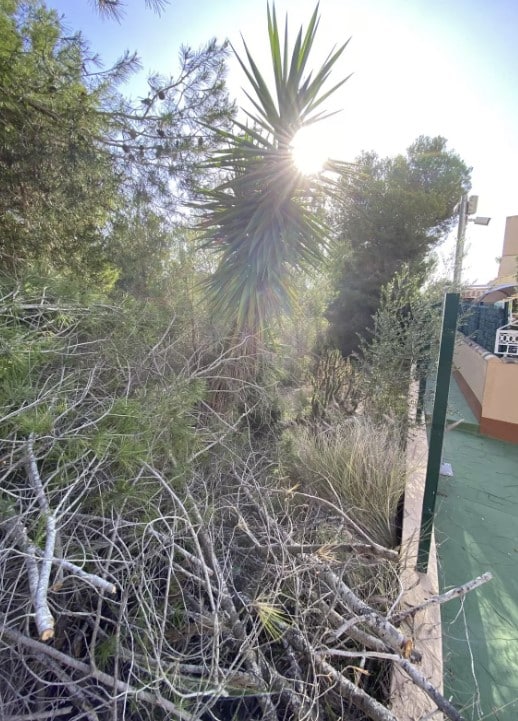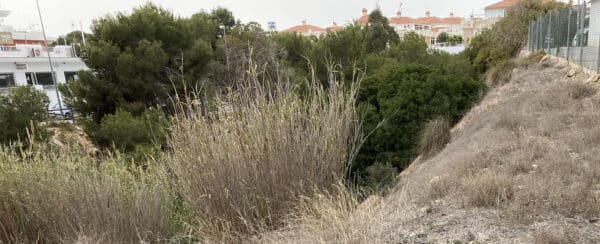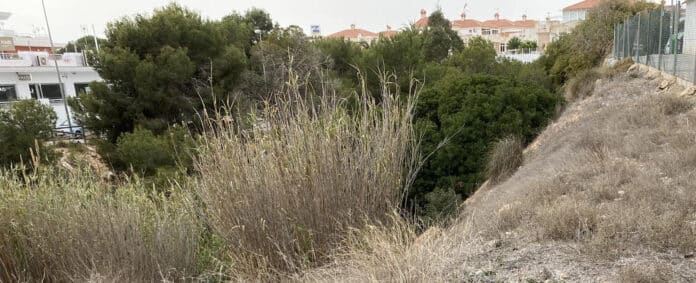In the face of a lack of action by both the Orihuela Council and the Hydrographic Confederation of the Segura, Residents from the Avalon Urbanisation in Playa Flamenca have forked out 5,000 euros to clean the forested section of rambla that borders their homes.
Particularly during the dry summer season, adjacent trees and vegetation provide the consequent danger of fire as can be seen just last week in Las Ramblas and Campoamor where a fire razed 10 hectares, endangering homes and the Protected Landscape of Sierra Escalona and the Dehesa de Campoamor.
The area was cleared by residents in just under a week, with the authorisation of the Segura Hydrographic Confederation (CHS),
Tired writing to the Orihuela council over a period of the last five years, without obtaining any solution, the residents ended up asking the CHS for permission to undertake the work that they considered “essential.”
Antonio Caro, representing the 126 residents of the Calle Niagara urbanisation, next to a sports centre and a nursery, insists that with so much accumulated pine it had become “a four-metre-high potential oven,” so they were constantly aware of the danger to their houses: “Every day we were praying” in fear of a tragedy.
Caro, who has been living in the same house for 15 years, says it is a problem that became worse every year, with high temperatures and young people who gather in the ravine to socialise.
As such they had no choice but to pay for the action out of their own pockets, a bill that amounts to almost 5,000 euros, not including the costs of the truck to transport the prunings, and the payment of a 70 euro fee to the CHS for a service they did not provide.
With four streets facing the rambla, residents ended up using their urbanisation gardener to prune and establish a firewall.
The Association of Residents of Cabo Roig and Lomas says that “it is an example of what should never be an example: some residents paying with their money to shore up the incompetence and inaction of the administrations that have an obligation to ensure their safety.”







